CeoTronics CT-DECTMULTI CT-DECT Multi User Manual dok1208 gb
CeoTronics AG CT-DECT Multi dok1208 gb
Manual
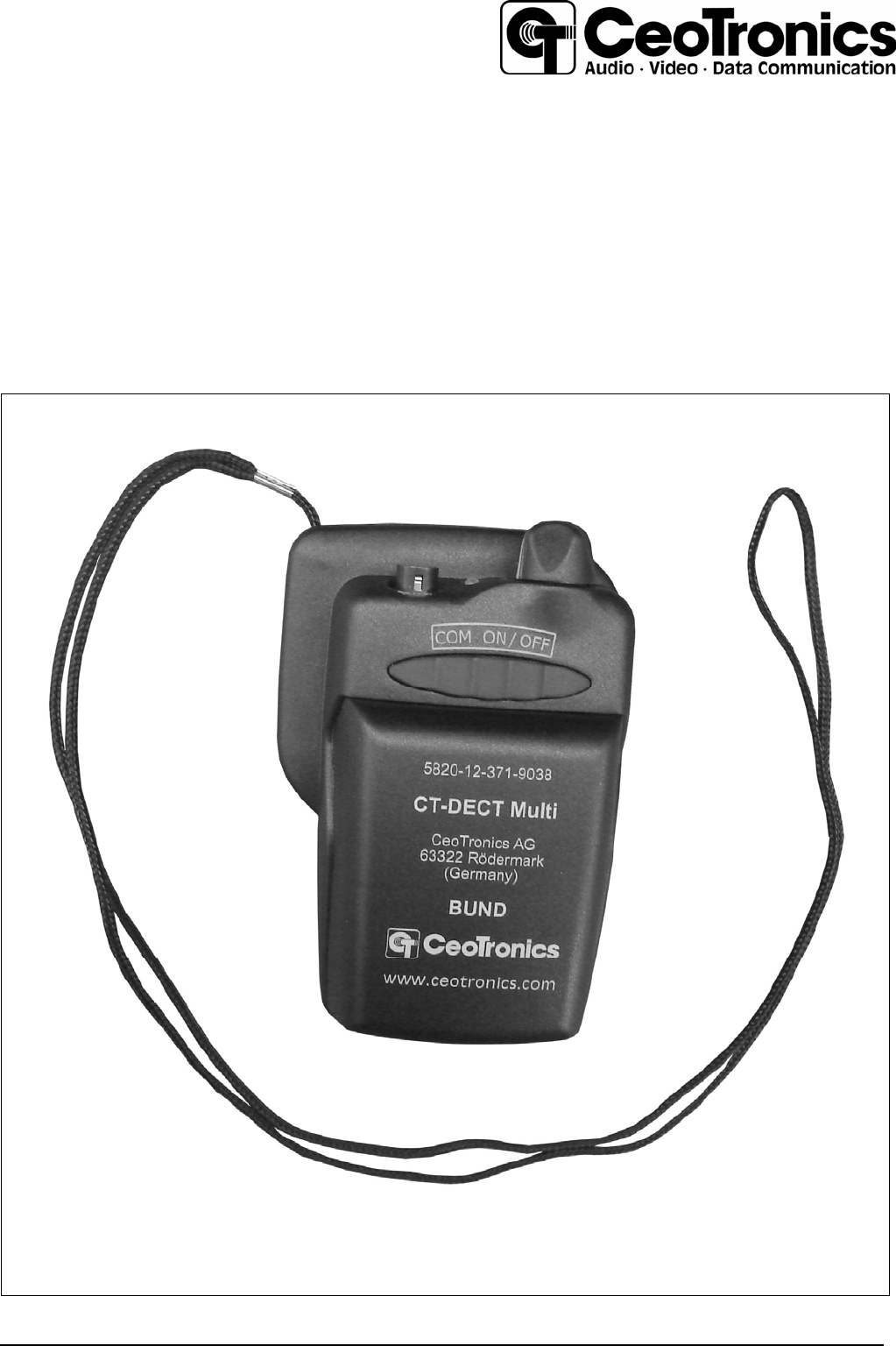
CT-DECT Multi
Operating Instructions

2
Contents
1. Technical safety instructions, environment protection, safety at work ...............................................3
2. Description .........................................................................................................................................6
2.1 Technical data ............................................................................................................................7
2.2 Technical description ..................................................................................................................8
3. Operation .........................................................................................................................................10
3.1 First commissioning ..............................................................................................................10
3.1.1 Recharging the NiMH rechargeable batteries....................................................................10
3.1.2 On-air subscription of the CT-DECT Multi (PP) to the CT-DECT Case (8) (FP) ...............12
3.2 Commissioning......................................................................................................................14
3.2.1 Fasten the CT-DECT Multi (PP) on your clothing..............................................................14
3.2.2 Connect the headset to the CT-DECT Multi (PP)..............................................................14
3.2.3 Switch on CT-DECT Multi (PP) and CT-DECT Case (8) (FP) ...........................................14
3.3 Controls ....................................................................................................................................15
3.4 Operating under special climatic conditions..............................................................................15
4. Maintenance and proper care ..........................................................................................................15
4.1 Visual inspection.......................................................................................................................15
4.2 Cleaning....................................................................................................................................15
4.3 Faults, causes, corrective actions.............................................................................................16
4.4 Storage .....................................................................................................................................16
4.5 Transport and shipping .............................................................................................................16
5. Replacements to be made by the user ............................................................................................16
5.1 Replacing components .............................................................................................................16
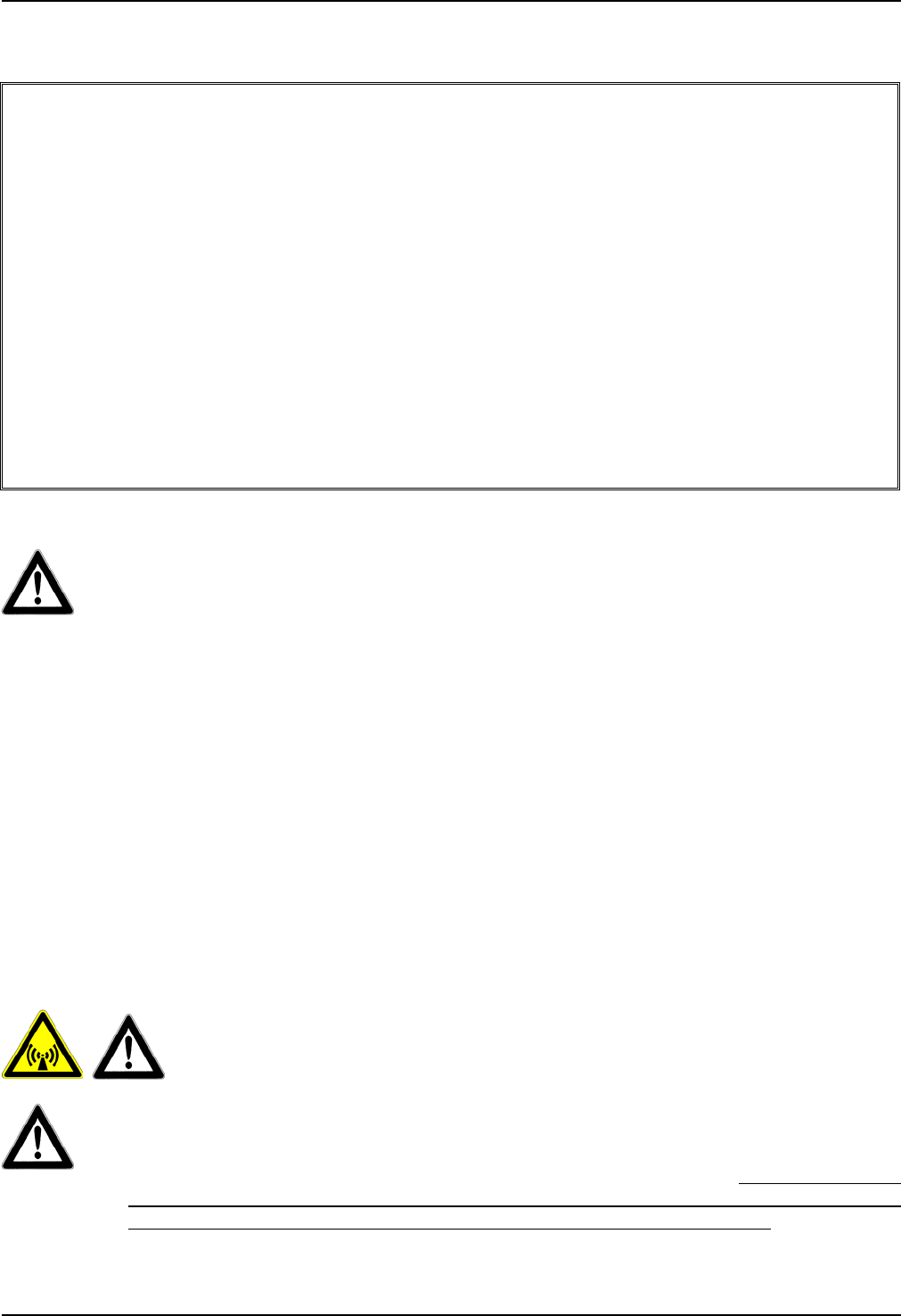
3
1. Technical safety instructions, environment protection, safety at work
Important Information for Users of the
CT-DECT transceivers
The CT-DECT transceiver modul has been tested for electromagnetic compatibility and is
compliant with the european DECT-Standard.
CT-DECT transceivers that are not intrinsically safe (explosion-protected) and therefore do
not have any special hazardous duty marking must never be used in potentially explosive
atmospheres. Unprotected CT-DECT transceivers can trigger explosions unintentionally in
these areas.
CeoTronics does not assume any liability for damage to property and personal injuries of any
kind that can arise through the above mentioned or any other incorrect use of the CT-DECT
transceivers.
Important safety instructions
For the use of the device notice the national safety and accident prevention regula-
tions and the following safety instructions shown in italics in this instruction manual.
z Before using CeoTronics products read completely the appropriate operating instructions. If in doubt,
ask our technical staff.
z If repair work of any kind needs to be done to CeoTronics products, arrange for it to be performed
only by the company CeoTronics or by a specialized workshop that is authorized by CeoTronics. In
all other cases our warranty and liability for the product shall lapse.
z Do not immerse the radio equipment into water.
z When using CeoTronics products that are equipped with connection leads ensure that the latter do
not get caught up in operational machinery or wheels!
z Radio equipment that are not intrinsically safe (explosion-proof) and therefore have no spe-
cial explosion-proof designation must never be operated in potentially explosive environ-
ments (e.g. when refuelling cars, aircraft etc.). Devices that are not explosion-proof can unin-
tentionally trigger off explosions in such areas!
z Connect CeoTronics accessories to a device or disconnect them from a device only when the device
is switched off.
z If you are a cardiac pacemaker carrier, before operating a transmit-
ter/receiver ask the manufacturer of your cardiac pacemaker for informa-
tion about any impairment that might be caused due to high frequencies.
z With radio equipment, volumes of more than 85 dB(A) could be received, however, vol-
ume can be adjusted by the user. After switching on the communication system, adjust
the receiving volume at about 1/2 level of the maximum possible and check the volume
received in your earpiece. Do not set to higher levels than necessary. Very high volumes
could damage your sense of hearing, particularly under continuous operation. If volumes
or sound levels are high, the use of additional ear plugs is recommended. In case of any
doubt, contact your specialist for occupational health and safety or the company physi-
cian.
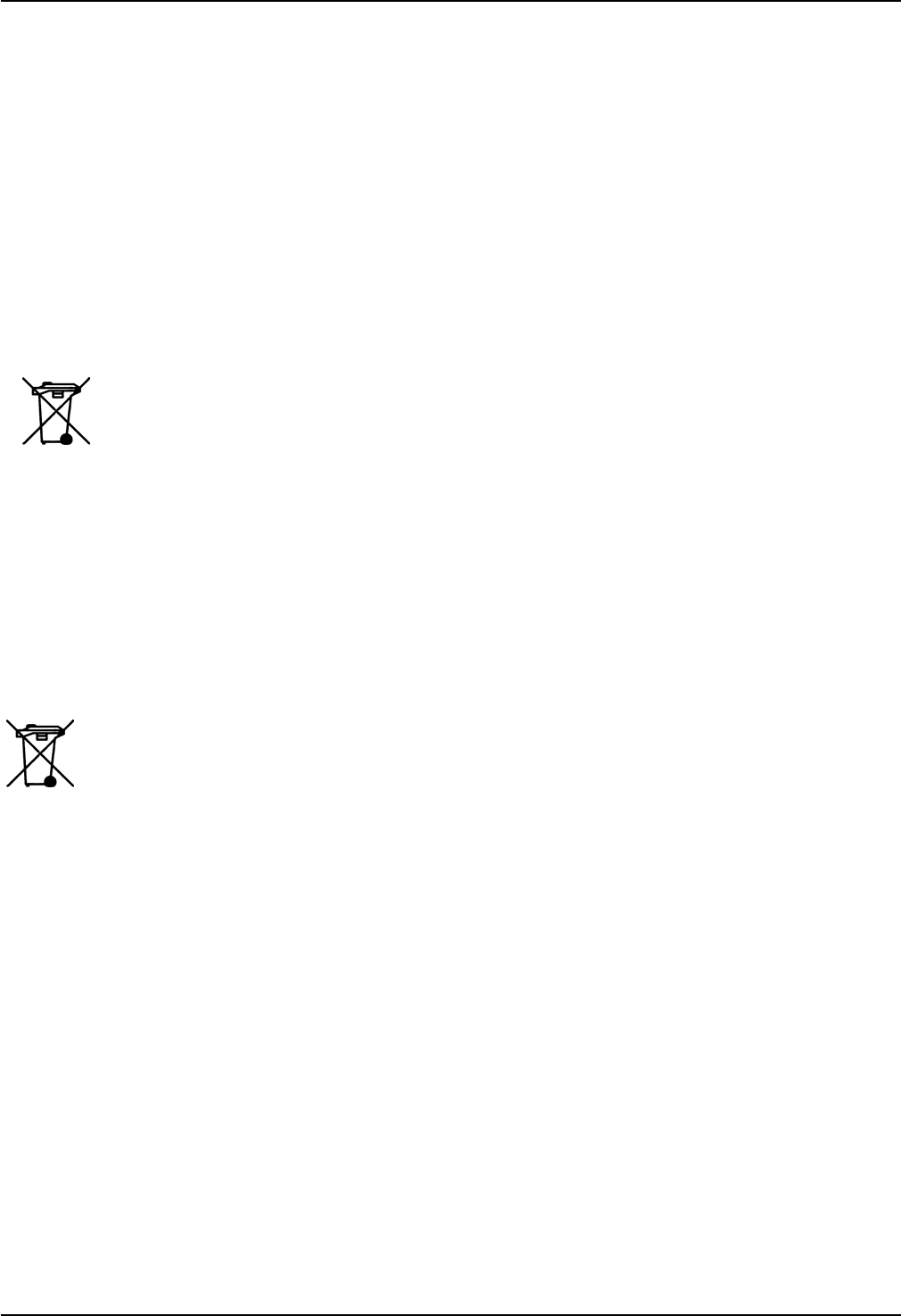
4
z Before starting to operate the device in sensitive areas like e.g. aboard airplanes or in hospitals etc.,
please check first if it is permitted to use it in these environments.
For use aboard an airplane a Type Certificate (TC) or a Certificate of Nonobjection (CO) must be
available. Should the communication equipment not be homologated, its use aboard an airplane is
strictly prohibited as it could jeopardize the safety of the airplane. Never put electronic devices into
operation aboard an airplane without obtaining prior approval from the cabin crew.
z Do not leave the radio equipment products lying around loose in cars, e.g. on the parcel shelf. Stow
these products in a suitable, safe place in the car so that they do not present a danger to you or to
other occupants of the car, if emergency braking is effected.
z When driving a car, do not use the radio because it may distract you from the other traffic.
z Charge rechargeable batteries only with the appropriate suitable charger. Observe the voltage and
currency specifications. Never use the charger to recharge non-rechargeable batteries.
z When handling rechargeable batteries comply with environmental protection regulations !
Never attempt to open a rechargeable battery and never throw a rechargeable battery into
fire. Expended (defective) rechargeable batteries are subject to compulsory regulated
waste disposal. Do not put them in the household waste!
z Ensure that a short-circuit (risk of fire or injury) is not created across rechargeable battery terminals
or charging sockets by a short-out (bent-open paper clip, bunch of keys etc.). In such an event the
warranty shall lapse. Transport any spare rechargeable batteries in an electrically non-conducting
package in order to avoid short-circuiting the rechargeable batteries.
z Keep the radio equipment and rechargeable batteries out of the reach of children and any other per-
sons who are not familiar with the handling and operation thereof.
z Safe operation requires clean devices. Ensure that the devices (microphones, connectors etc.) are
clean and in good condition at all times.
z The radio equipment may only be used for the specific application envisaged.
z Should equipment, supplied by CeoTronics, be definitely put out of service you may return it to
CeoTronics. We ensure recycling and/or disposal of outdated equipment in compliance with
the applicable environment protection law.
z Keep these operating instructions for later use.
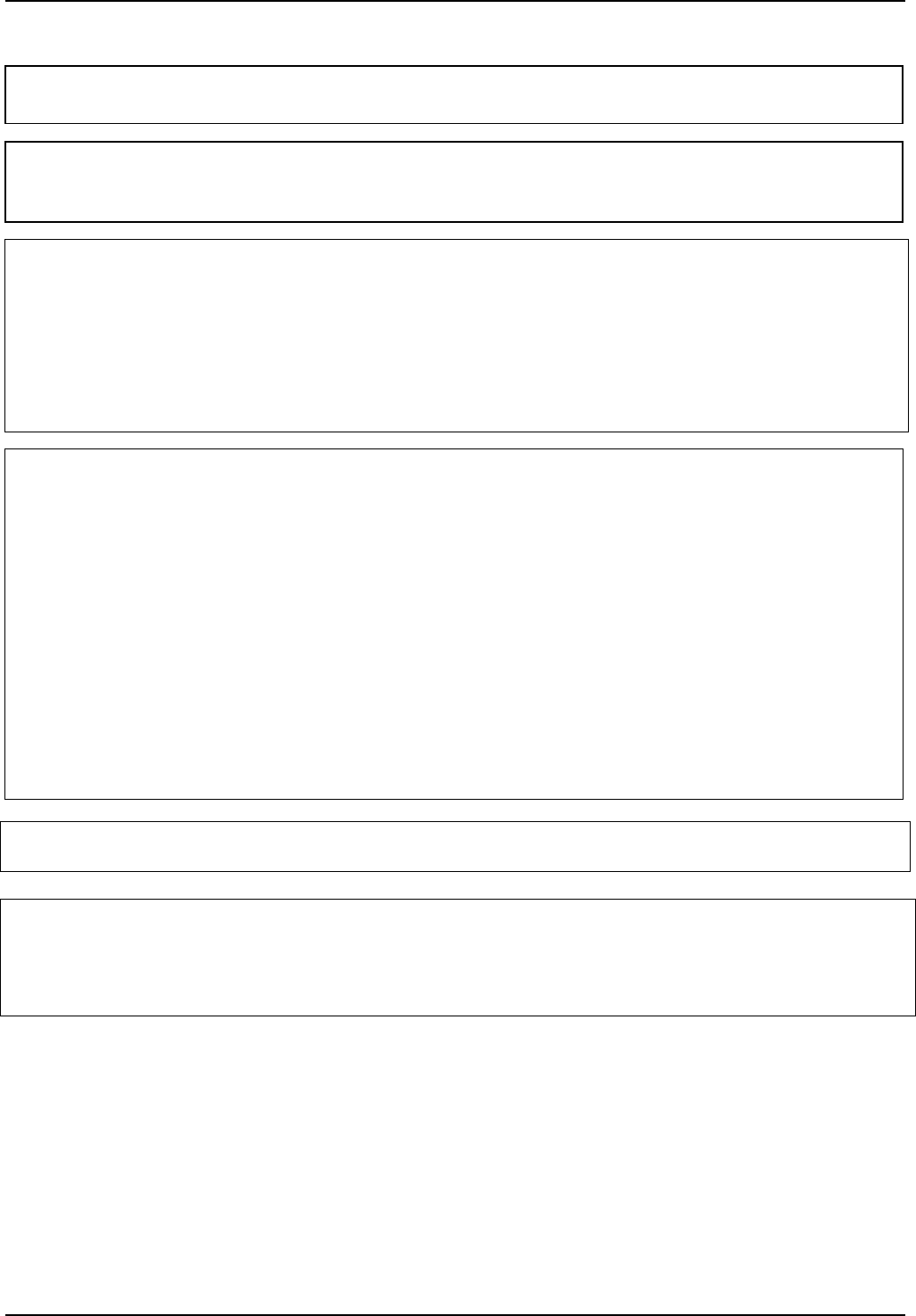
5
Important Notes for operation of the CT-DECT System in the USA
Please note that any changes or modifications not expressly approved by the party
responsible for compliance will void the user’s authority to operate the equipment.
This device complies with part 15 of the FCC Rules. Operation is subject to the following two
conditions: (1) This device may not cause harmful interference, and (2) this device must
accept any interference received, including interference that may cause undesired operation.
Note: This equipment has been tested and found to comply with the limits for a Class A digital
device, pursuant to part 15 of the FCC Rules. These limits are designed to provide reasonable
protection against harmful interference when the equipment is operated in a commercial envi-
ronment. This equipment generates, uses, and can radiate radio frequency energy and, if not
installed and used in accordance with the instruction manual, may cause harmful interference
to radio communications. Operation of this equipment in a residential area is likely to cause
harmful interference in which case the user will be required to correct the interference at his
own expense.
NOTE: This equipment has been tested and found to comply with the limits for a Class B
digital device, pursuant to Part 15 of the FCC Rules. These limits are designed to provide
reasonable protection against harmful interference in a residential installation. This equip-
ment
generates, uses and can radiate radio frequency energy and, if not installed and used in
accordance with the instructions, may cause harmful interference to radio communications.
However, there is no guarantee that interference will not occur in a particular installation. If
this equipment does cause harmful interference to radio or television reception, which can be
determined by turning the equipment off and on, the user is encouraged to try to correct the
interference by one or more of the following measures:
. Reorient or relocate the receiving antenna.
. Increase the separation between the equipment and receiver.
. Connect the equipment into an outlet on a circuit different from that to which the receiver is
connected.
. Consult the dealer or an experienced radio/TV technician for help.
This device and its antenna must not be co-located or operating in conjunction with any other
antenna or transmitter.
Body-worn operation has been tested and meets the FCC RF exposure guidelines when used
with the Applicants accessories supplied or designated for this product as listed in the filing.
Use of other accessories may not ensure compliance with FCC RF exposure guidelines. The
highest reported SAR values for the single configuration under this FCC ID are….. W/kg for the
Part 15D/ 1.9 GHz-band.
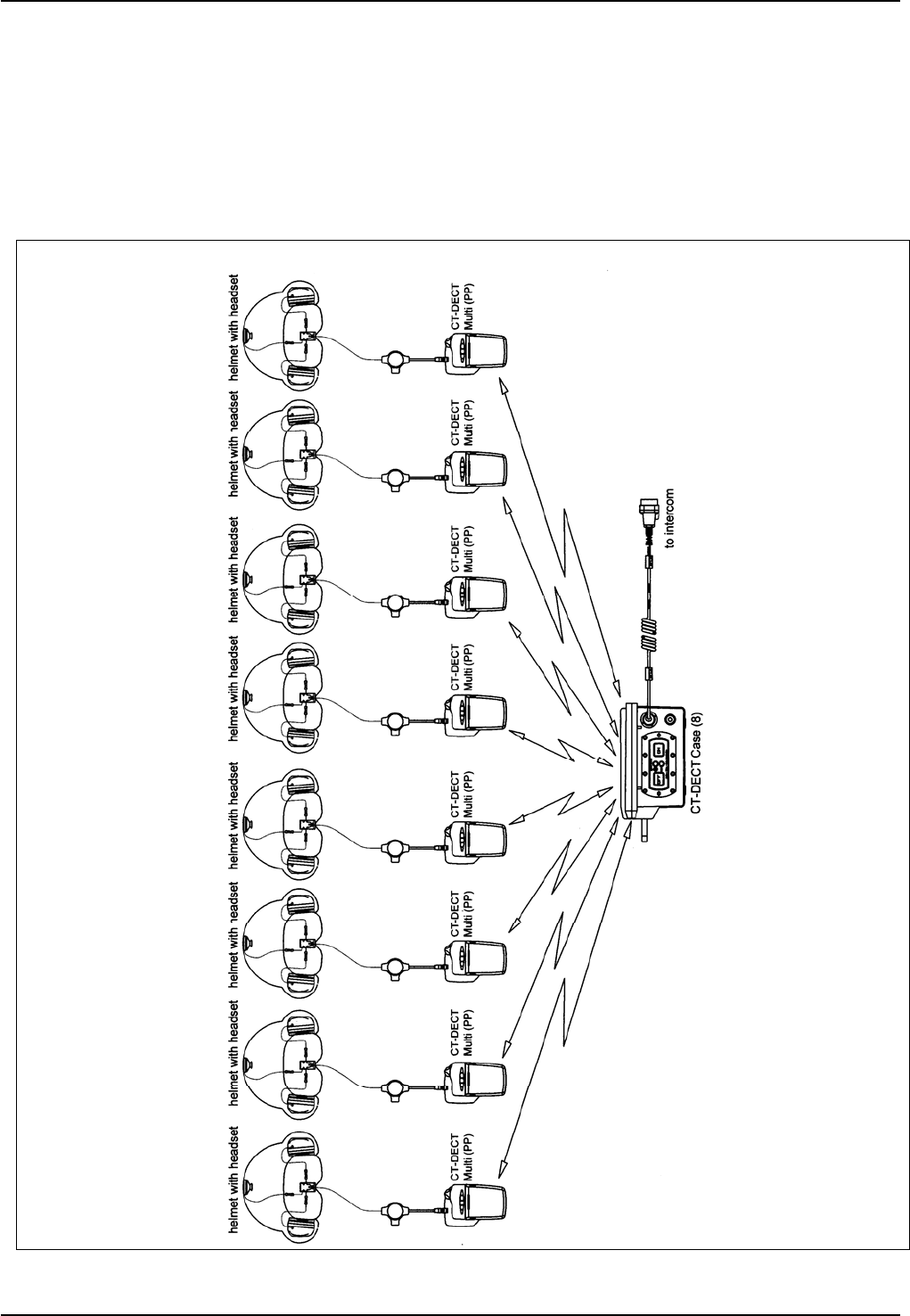
6
2. Description
The CT-DECT Multi (PP) is a two-way radio for wireless communication over short distances and is
used in conjunction with a headset and the CT-DECT Case (8) (FP). The working range between the
CT-DECT Multi (PP) and the CT-DECT Case (8) depends on the local conditions.
The "CT-DECT Multi (PP)" is used normally with his associated CT-DECT Case (8) (FP) and must be
subscribed to it. The use of a CT-DECT Multi (PP) with another CT-DECT Case (8) (FP) is only possi-
ble, if the CT-DECT Multi (PP) subscribed to it.
Combined with a CT-DECT Case (FP), mobile users are able to communicate for instance with the
crew aboard an aircraft. A high degree of tapping and interference protection is assured.
Figure 1 System overview / example

7
2.1 Technical data
Unit is equipped with
- Battery compartment for 3 AA-batteries
- Acoustic multilevel warning „Low-Battery“ in the connected headset
- Optical warning „Low-Battery“
- Volume switch with ON/OFF-function
- 6-pole socket for headsets
- Fall protection cord
Technical Data
USA
Frequency band 1920 – 1930 MHz
Mode of Transmission TDMA 24 Slots per frame
Channel spacing 1,728 MHz
Automatic channel selection 5 channels
Transmission range ≥200m (obstacle-free area)
≥75m (dependent on the local conditions)
Power supply rechargeable batteries NiMH or
AA-batteries
Operating time approx. 20 hours (by 23°C) on use of the
provided rechargeable batteries
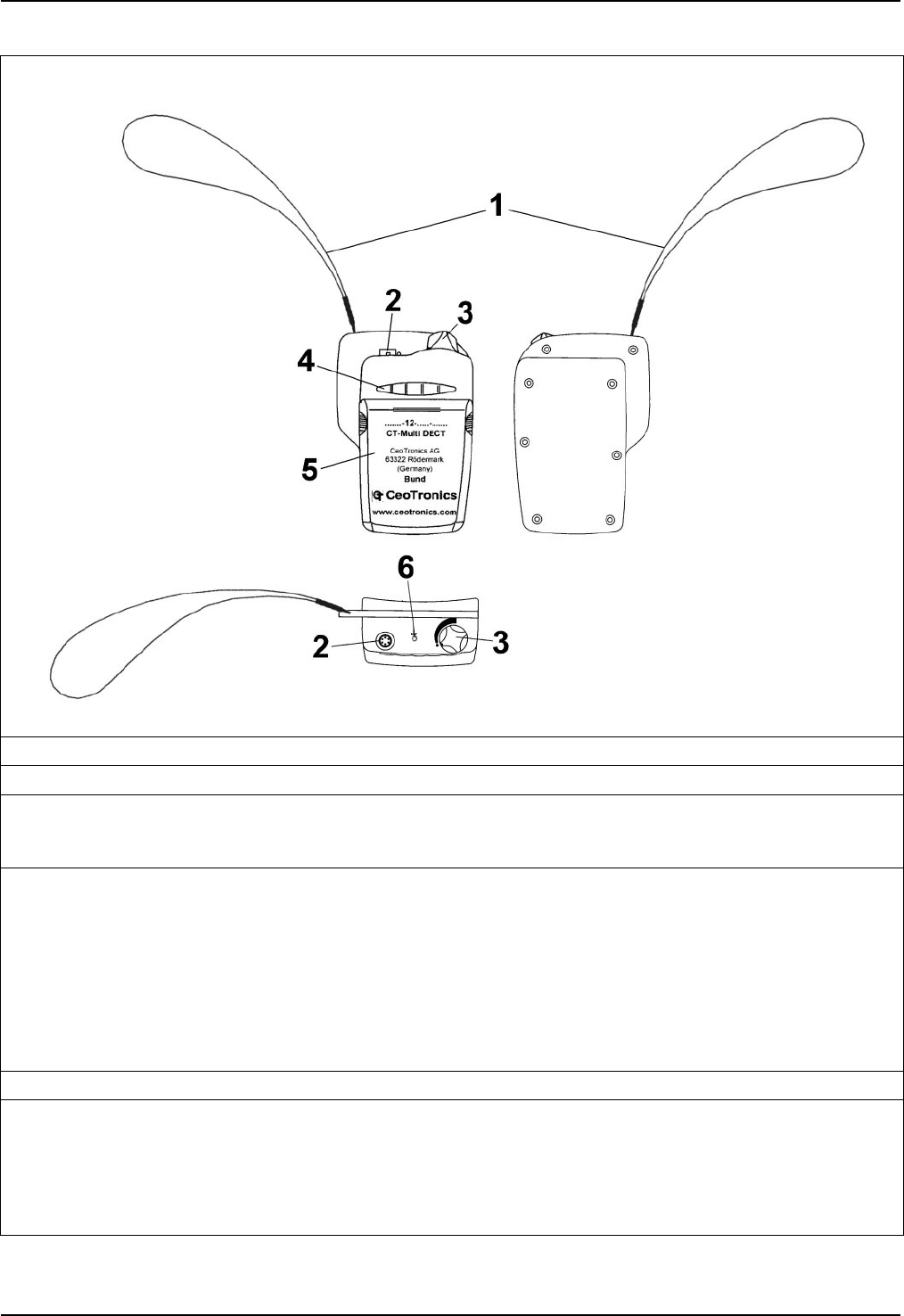
8
2.2 Technical description
Figure 2 radio CT-DECT Multi (PP)
1 Fall protection cord
2 6-pole jack for a CT communication set
3 On/off switch and volume control (rotary knob). The unit is switched off if the rotary knob is set
fully counter-clockwise (position » z «). The volume control is used to adjust the volume for
the communication set.
4 Bank of 5 pushbuttons.
- Three center buttons »COM ON/OFF«: shortly pressing any of these three buttons activates
the aircraft intercom connection with the crew aboard (you hear a high double beep in your
CT headset) if previously it was switched-off or deactivates it (you hear a low double beep
in your CT headset) if previously it was switched-on.
Only the user establishing the intercom connection is connected through to the aircraft.
- All five pushbuttons can be used for subscription of the CT-DECT Multi (PP) to the base
device (FP) for example a CT-DECT Case
5 Removable cover for the battery compartment
6 Control lamp, batteries
green illuminates constant UB > 3,55V
green flashes 3,4V < UB ≤ 3,55V
red flashes UB ≤ 3,4V, approx. 30 minutes operating time
LED OFF UB ≤ 2,8V, no function
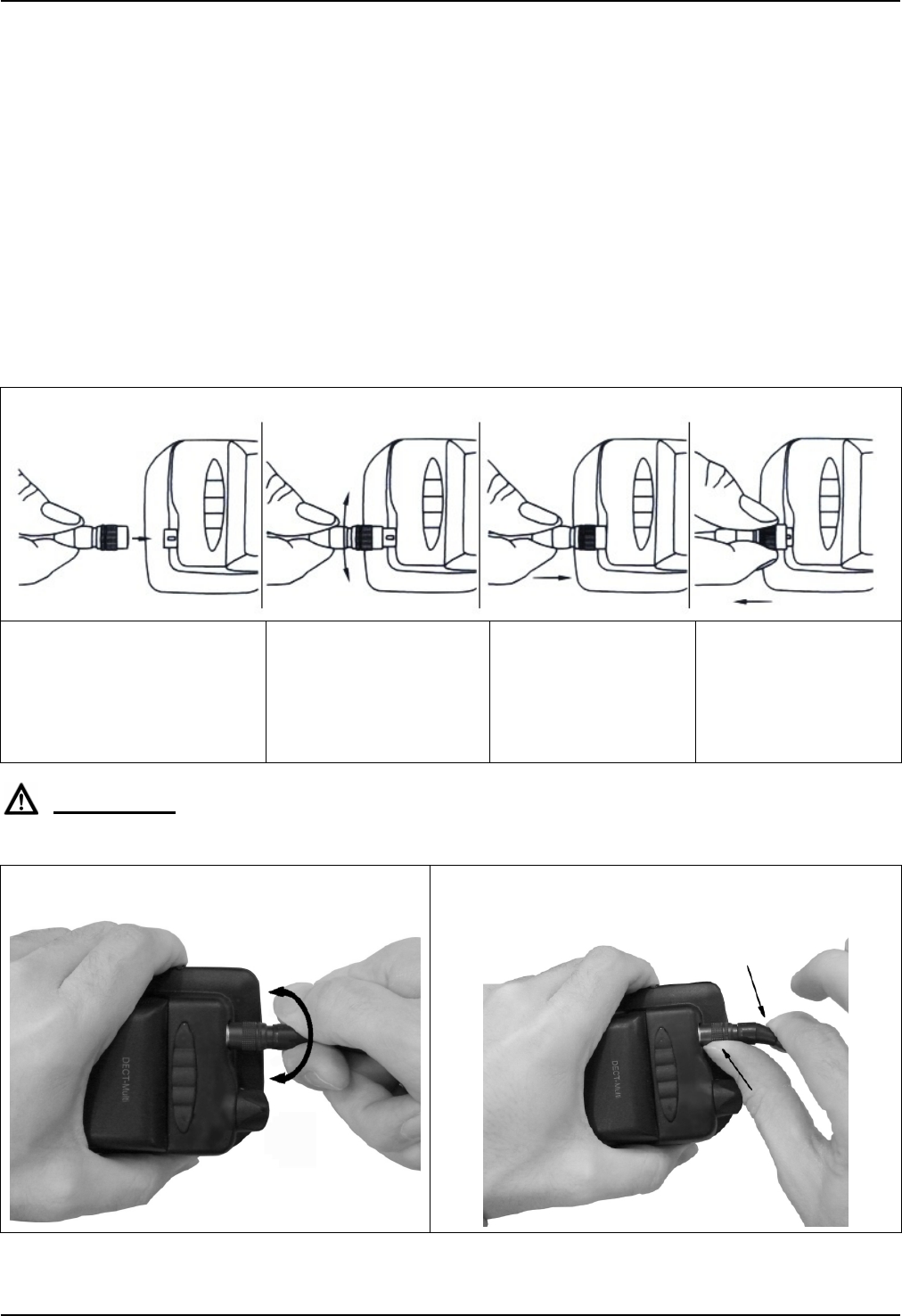
9
2.2.1 Power supply
Power for the CT-DECT Multi is supplied either by three rechargeable batteries or by 3 alkaline batter-
ies in the battery compartment.
2.2.2 Audio signals used
Two different audible tones are used for signaling the operating status via the communication set con-
nected to the device. The tone for the indication of positive operating status has a higher frequency
than the tone for the indication of negative operating status. Signaling of the various operating status is
effected by a varying number of consecutive high tones or low tones.
Positive acknowledgement tone
All positive operating status are indicated by a high tone.
Negative acknowledgement tone and error tone
All negative operating status and error status are indicated by a low tone.
2.2.3 Plug-in connections
Figure 3: Connecting and disconnecting plug-in connections
Hold the connector behind
the grooved sliding sleeve
and put it onto the jack.
Turn the connector
carefully on the jack
until it starts sliding into
it.
Push the connector
into the jack until the
sliding sleeve en-
gages in direction of
the arrow, locking the
connector.
To unlock the plug-in
connection, simply
hold the connector at
the grooved sliding
sleeve and pull it out
off the jack.
CAUTION!
The locked plug-in connection may neither be twisted (figure 4) nor bent (figure 5). Improper
handling could damage the plug-in connection.
Figure 4 Figure 5
Never pull the cable of the plug-in connection. Pulling the cable may damage the plug-in con-
nection (figure 6).
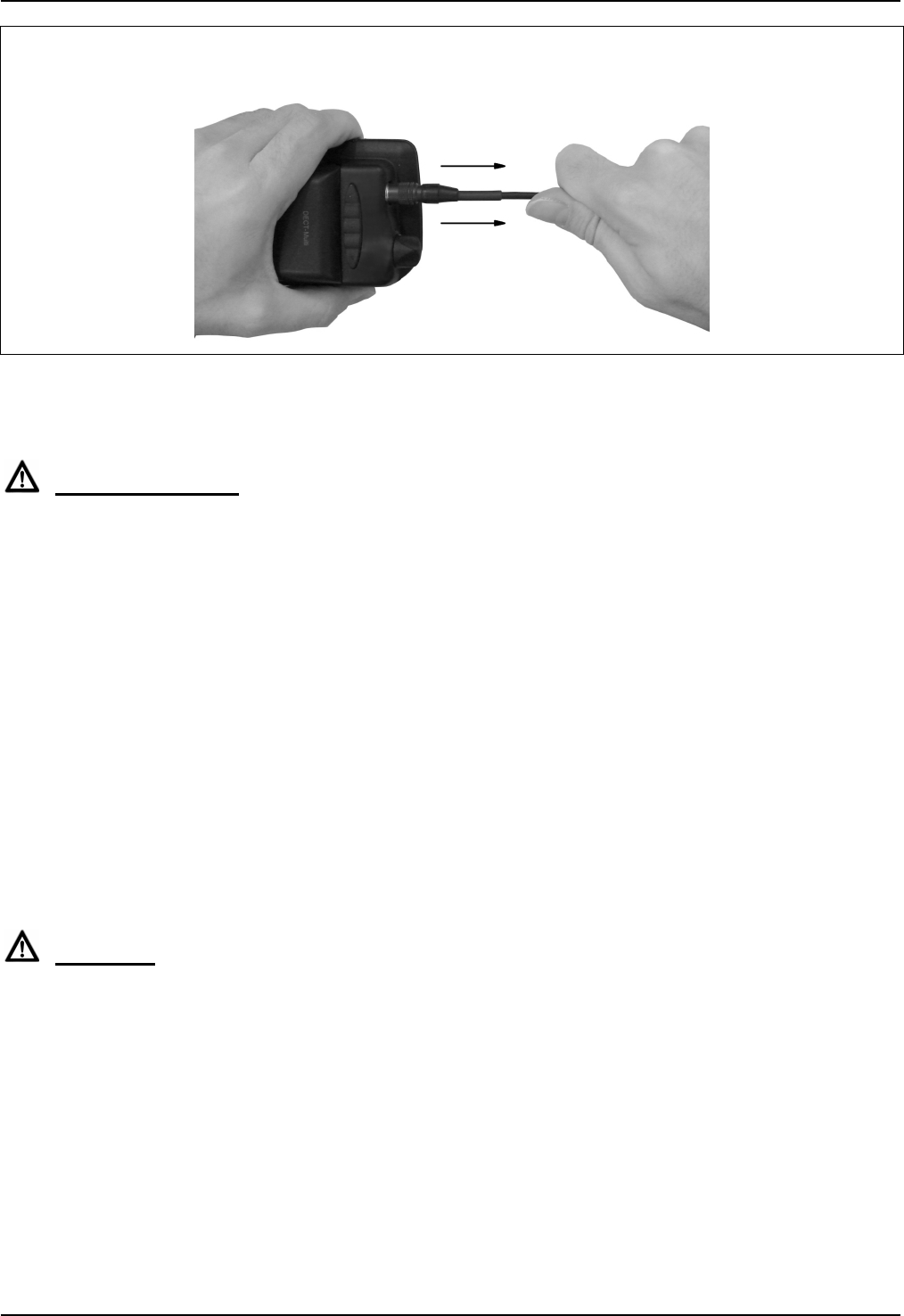
10
Figure 6
3. Operation
3.1 First commissioning
PLEASE NOTE:
Before inserting rechargeable batteries, please read the safety instruction.
At the beginning new NiMH rechargeable batteries do not deliver maximum power. Maximum power is
achieved only after a few recharging cycles.
Before charging rechargeable NiMH batteries, they must be completely discharged about once a
month. If this procedure is not followed, rechargeable batteries will not deliver anymore full power after
only a short time. Each communication device uses 3 rechargeable batteries. If one or more recharge-
able batteries are not fully charged, this will affect the reliability of the entire system. As it is not possible
to determine which one of the rechargeable batteries is in poor condition, the complete set must be
replaced. Proper care and handling helps controlling the number of rechargeable batteries in use.
The life of rechargeable batteries may vary as a result of daily recharging, natural ageing, and varying
operating conditions.
3.1.1 Recharging the NiMH rechargeable batteries
3.1.1.1 General
The rechargeable NiMH batteries in the device should only be charged with the charger supplied with
the system. Otherwise the rechargeable batteries may be damaged. The charger is neither watertight
nor dust-proof. Protect it against water, rain and dirt. The charger may only be used in rooms with nor-
mal relative air humidity and temperature. Do not cover up the charger.
Warning
z Never use battery chargers to charge non-rechargeable batteries.
Never open rechargeable batteries or throw them into fire. Do not open charger.
The repair is permitted only by the manufacturer.
z Never charge a rechargeable battery in areas with an explosion risk – an explosion may re-
sult. Charge rechargeable batteries only within a building or similar environment that does
not contain dangerous concentrations of volatile vapors.
The three NiMH batteries are in the battery compartment of the CT-DECT Multi. For charging they have
to be removed from the battery compartment.
a. Switch off the CT-DECT Multi.
b. Press on the two ribbed spots on the cover of the battery compartment, as shown in Fig. 5, and re-
move the cover from the battery compartment (Fig. 6).
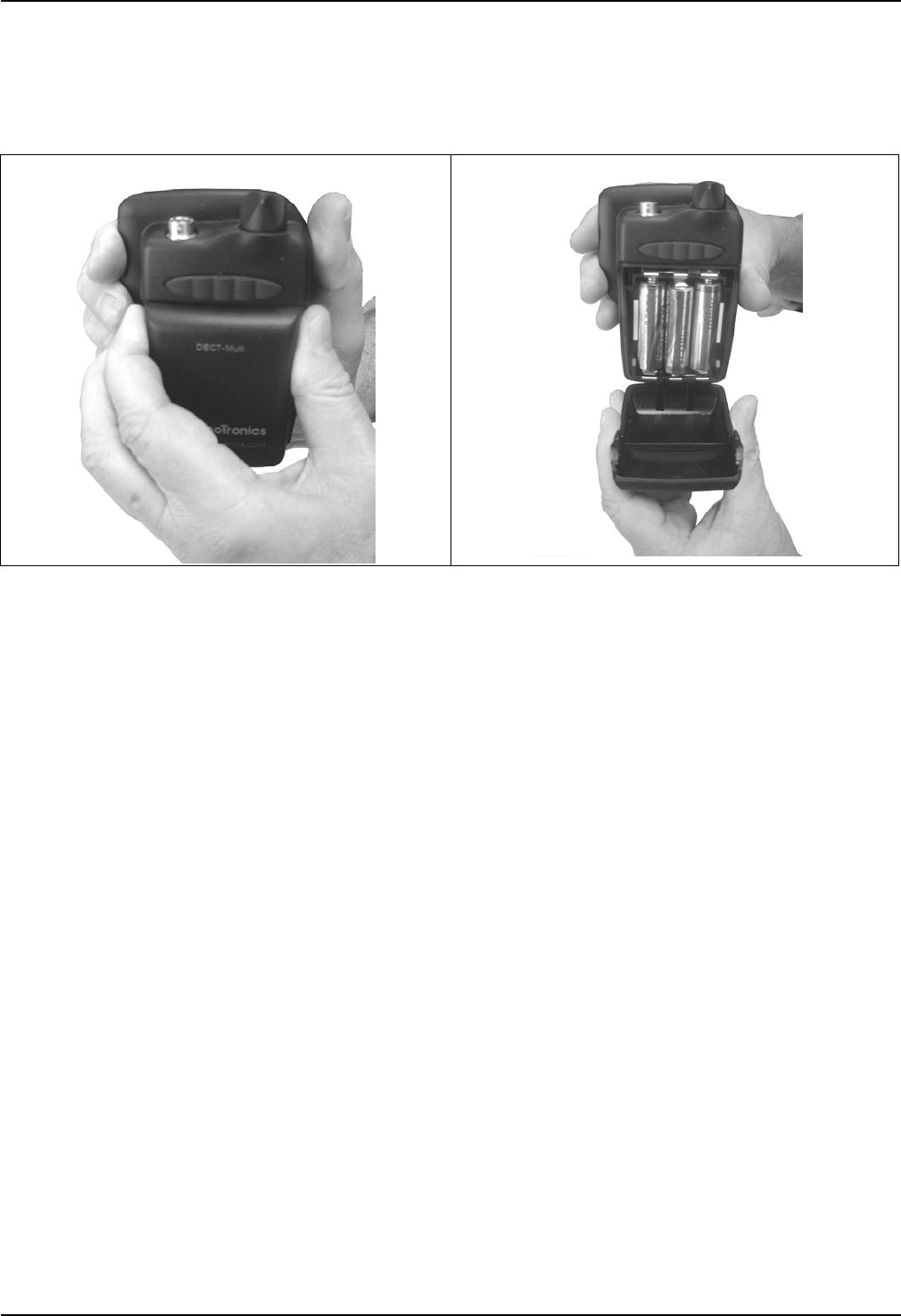
11
c. Take the three NiMH batteries out the battery compartment. Charge the rechargeable batteries with
the charger.
d. After charging: When inserting recharged NiMH batteries, attend to the polarity. Fit the two hooks of
the battery compartment cover into the two openings at the compartment’s bottom (Fig. 8) and press
the cover against the compartment until it is engaged.
Example Figure 7
Example Figure 8
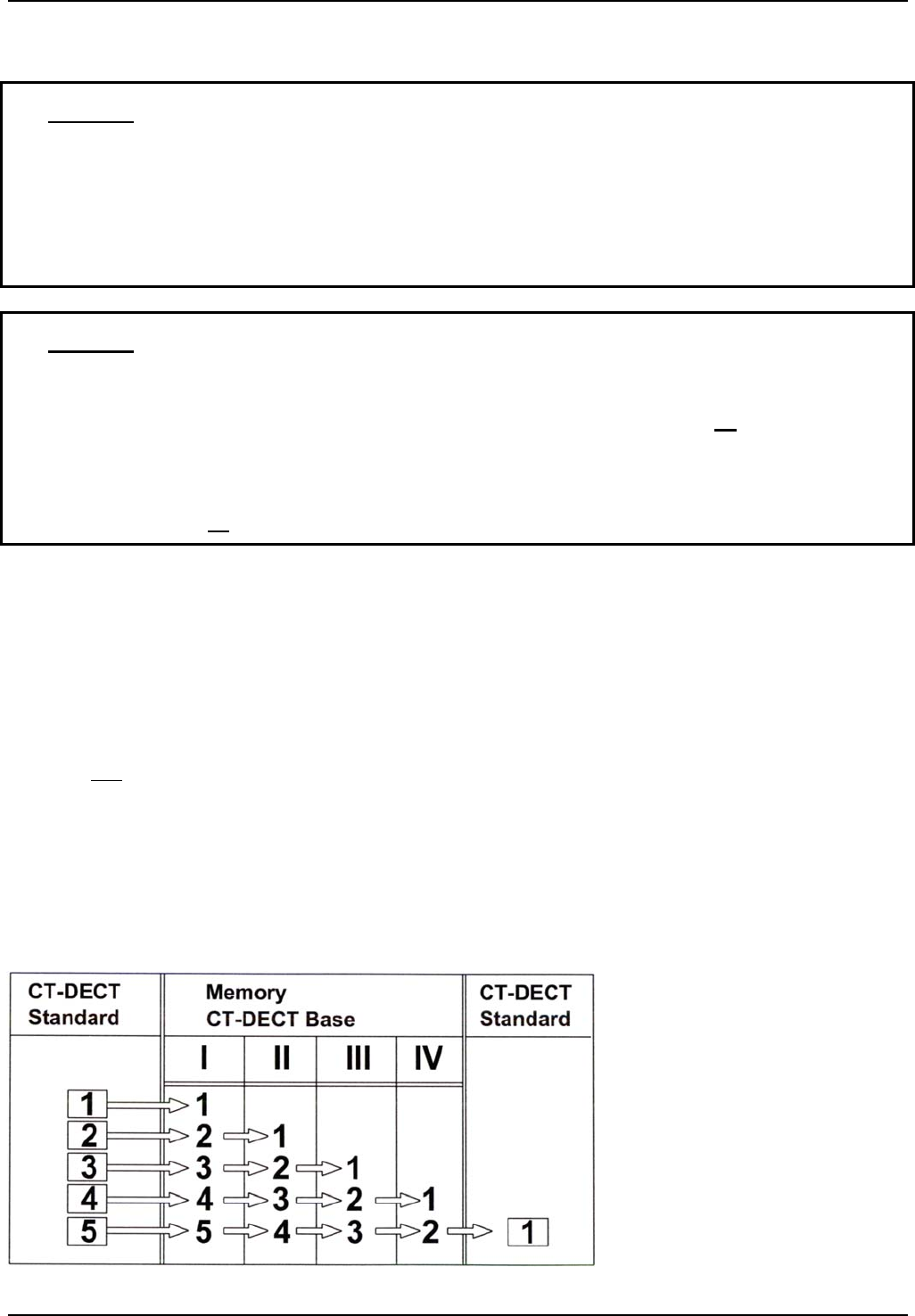
12
3.1.2 On-air subscription of the CT-DECT Multi (PP) to the CT-DECT Case (8) (FP)
Î NOTES
● The on-air subscription is not part of the normal commissioning and operating procedure
for the system. It must be performed again only in the case a CT-DECT Multi (PP) that isn't
subscribed to the CT-DECT Case (8) has to be used in conjunction with the CT-DECT Case
(8).
● A CT-DECT Multi (PP) can be subscribed to only one CT-DECT Case (8), never to two or
more CT-DECT Case (8) units simultaneously.
Î NOTES
z Two ore more CT-DECT Multi (PP) can never be simultaneously subscribed to the CT-DECT
Case (8), they must always be subscribed one after the other.
With two ore more CT-DECT Multi (PP) it is recommendable to subscribe all devices one after
the other to the CT-DECT Case (8), because a device can be deleted (see 3.1.2.1 »Principle of
subscription«).
z Comply with the instruction step sequence.
z After subscription all new subscribed devices have to be switched off again.
The on-air subscription procedure is performed on the CT-DECT Multi (PP) and the CT-DECT Case (8)
manually by means of operating elements. The CT-DECT Case (8) is the unit to which the maximum
eight (8) CT-DECT devices (PP) of a system need to be subscribed to.
3.1.2.1 Principle of subscription
Four CT-DECT Multi (PP) can be assigned to each transceiver module in the CT-DECT Case (8). The
four CT-DECT Multi (PP) assigned to a transceiver module should always be subscribed in groups, but
of course individually one by one.
Should a fifth CT-DECT Multi (PP) be subscribed to one and the same transceiver module, then the
CT-DECT Multi (PP) subscribed first would be deleted from the transceiver module’s memory (see ex-
ample in figure 9).
A CT-DECT Multi (PP) which has been deleted from the CT-DECT Case (8) memory cannot communi-
cate anymore with the DECT system and needs to be re-subscribed to the base unit following the sub-
scription instructions.
Fig. 5 Principle of subscription (example)
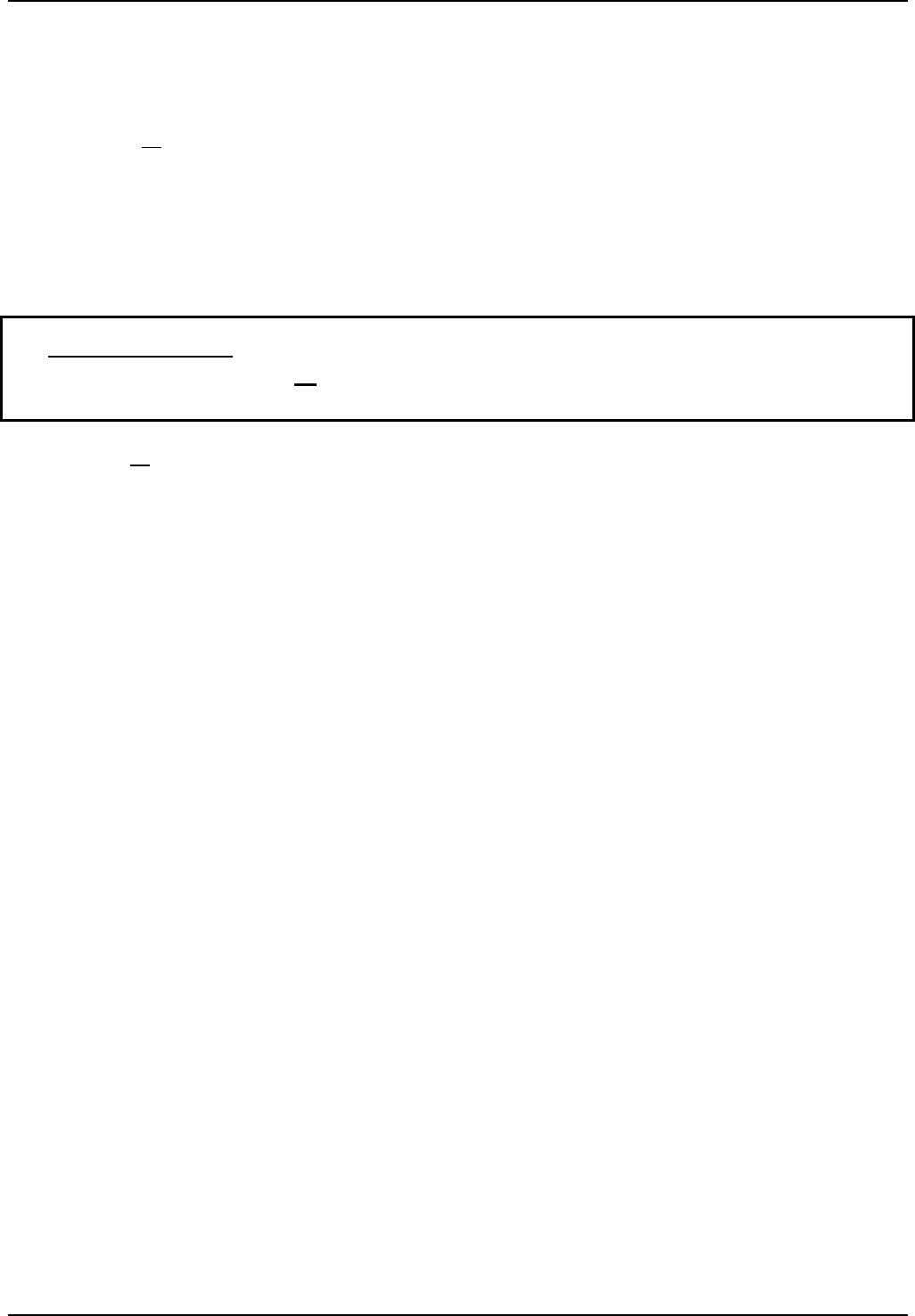
13
Time Out
If a subscription is not successfully completed within maximum 2 minutes since starting the process, a
»timeout« occurs. The timeout is signalized by a sequence of 4 short low tones in the headset of the
CT-DECT Multi (PP), repeating in 4-second intervals.
After a timeout all CT-DECT Multi (PP) subscribed to a transceiver module need to be subscribed anew
to the CT-DECT Case (8). In the event of only one CT-DECT unit (PP) the subscription of this single
CT-DECT unit (PP) has to be repeated.
3.1.2.2 Example of subscribing a CT-DECT Multi (PP) to a CT-DECT Case (8) (FP)
The following describes the subscription procedure of a CT-DECT Multi (PP) to a CT-DECT Case (8)
(FP). The subscription of other CT-DECT Multi (PP) units is done likewise.
Î PLEASE NOTE:
After successful subscription, all CT-DECT Multi (PP) units and the CT-DECT Case (8) (FP) must
be switched off again before putting the DECT system into operation.
a. Make sure all CT-DECT units are switched off.
b. Plug the CT headset into the 6-pole jack of the CT-DECT Multi (PP) and put the headset on, but
leave it in switched-off condition.
c. Press the subscription button on the CT-DECT Case (8) (FP) and keep it depressed. Switch on the
CT-DECT Case (8) (FP) while the subscription button is depressed and keep it depressed for at
least another 5 seconds after switch-on. Then release the subscription button and continue directly
with step »d« in order to avoid a »timeout«.
d. Press on the CT-DECT Multi (PP) at least one of the five buttons of the push-button bank and keep it
depressed. Switch the CT-DECT Multi (PP) on while depressing the button and keep it depressed for
at least another 5 seconds since switch-on until you hear a descending 5-tone sequence in your
headset. Then release the button.
The subscription process has been initiated and you hear about every 2 seconds an intermittent
short high beep in the headset of the CT-DECT Multi (PP). An ascending 5-tone sequence, repeat-
ing in 4-second intervals, finally informs you that the subscription process has been completed suc-
cessfully.
If, after maximum 2 minutes, the subscription process was not successful, this is signalized by a se-
quence of 4 short low tones, repeating in 4-second intervals.
In that case, switch off again the CT-DECT Case (8) (FP) and the CT-DECT Multi (PP) and repeat
the entire subscription process.
f. After successful completion of the subscription process, switch off again the CT-DECT Multi
(PP) and the CT-DECT Case (8) (FP) before commissioning the units (chapter 3.2).

14
3.2 Commissioning
3.2.1 Fasten the CT-DECT Multi (PP) on your clothing
Fasten the CT-DECT Multi at a suitable place on your clothing. Take care that your mobility is not im-
paired and the CT-DECT Multi (PP) can be operated without any problem.
3.2.2 Connect the headset to the CT-DECT Multi (PP)
Put the headset on. Fasten the PTT button of the headset with the clip on its back side at a suitable
place on your clothing. Connect the PTT button with the 6-pin connector through the connecting cable
to the 6-pole jack of the CT-DECT Multi (PP).
3.2.3 Switch on CT-DECT Multi (PP) and CT-DECT Case (8) (FP)
Switch-on, establishing connection, adjusting the volume
Î PLEASE NOTE:
Applies to CT-DECT Multi (PP) units subscribed to a CT-DECT Case (8) (FP).
a. First switch on the CT-DECT Case (8) (FP). The CT-DECT Case (8) (FP) starts now an initialization
process during which it may not be switched off. After initialization the pilot lamp lights up.
b. Switch on the CT-DECT Multi (PP) units you want to communicate with, using the ON/OFF switch /
volume control. After switch-on you will hear a high beep in the headsets. After this, synchronization,
i.e. the search process, starts between the CT-DECT Case (8) (FP) and the CT-DECT Multi (PP)
units, the duration of which may vary. While this process is under way, a high-low tone sequence will
be heard every second in the CT headsets, indicating, that the CT-DECT Multi (PP) units are seek-
ing their CT-DECT Case (8) (FP).
After successful synchronization - i.e. a CT-DECT Multi (PP) found its CT-DECT Case (8) (FP) - the
high-low tone sequence falls silent and a high double beep is heard in the headset. CT-DECT Case (8)
(FP) and CT-DECT Multi (PP) units establish now automatically the connection between one another.
As soon as the connection is established a final high beep will be heard in the CT headset. This indi-
cates that the units are now ready for duplex communication within the working range between CT-
DECT Multi (PP) and base unit.

15
3.3 Controls
Duplex communication between »mobile« users
After switch-on of the CT-DECT Case (8) and the CT-DECT devices (PP) and successfully completed
automatic establishment of connection (see chapter 3.2.3) the units are ready for duplex communica-
tion within the working range between CT-DECT devices (PP) and CT-DECT Case (8). Microphones
and headsets are permanently switched on. Each user can speak in its headset microphone and hear
in the earpiece of his headset the conversation of the other users. Adjust the communication volume
with the volume control for your headset earpieces. Never adjust the volume higher than necessary for
clear and proper communication.
Communication between »mobile« users and the aircraft intercom system
With the help of the PTT button on the headset, communication between »mobile« users and the crew
of the aircraft is possible, while the PTT button is pressed.
Pressing the »COM ON/OFF« buttons on the CT-DECT devices (PP) once establishes communication
between »mobile« users and the crew aboard the aircraft; pressing a second time cuts the communica-
tion off.
If the communication between »mobile« users and the aircraft crew is OFF, a high double beep sounds
in the headset after pressing the buttons. Now, communication is switched on.
If the communication between »mobile« users and the aircraft crew is ON, a low double beep sounds in
the headset after pressing the buttons. Now communication is cut off.
Only the »mobile« user establishing the intercom connection is connected with the crew of the aircraft
and only he can terminate the connection.
3.4 Operating under special climatic conditions
The system is tested and approved for use within a working temperature range from -30°C up to +55°C.
Exceptions apply to batteries and charging devices.
Rechargeable batteries
Very low or very high temperatures affect the life of rechargeable batteries.
Rechargeable batteries may only be used in the temperature range from 0°C to +50°C. At temperatures
below 0°C we recommend the use of alkaline batteries.
As CT-DECT devices (PP) are used close to the body, temperatures below 0°C are rarely seen.
4. Maintenance and proper care
4.1 Visual inspection
Inspect the system and particularly cables and connector assemblies regularly for signs of cracks, fis-
sures, and deterioration.
4.2 Cleaning
After every use the entire system should be cleaned.
ATTENTION!
Pay attention that no humidity could penetrate into the device during cleaning.
Do not use solvents (e.g. benzene, alcohol, etc.) for cleaning!
Remove loose dust with a soft brush. Clean the outside of components, if necessary, with an appropri-
ate clean cloth, only lightly moistened with clear water, and then rub it down thoroughly. If heavily
soiled, a few drops of rinsing agent may be added. Clean the connector pins with a commercial clean-
ing agent.

16
4.3 Faults, causes, corrective actions
Fault Cause Corrective action
CT-DECT Multi (PP),
after switch-on, no tone sounds
in the headset
Rechargeable batteries are
completely run down or defec-
tive
Recharge or replace recharge-
able batteries
CT-DECT Multi (PP), life of re-
chargeable batteries is too short
Rechargeable batteries are de-
fective
Replace rechargeable batteries
After switching the system on,
automatic establishment of con-
nection is not completed suc-
cessfully
CT-DECT Multi (PP) is not sub-
scribed to the CT-DECT Case
(8) (FP)
Perform subscription procedure
4.4 Storage
The equipment can be stored at temperatures from -40°C up to +80°C. Exceptions apply to recharge-
able batteries.
Rechargeable batteries
Store rechargeable batteries at: -20°C...50°C for 30 days maximum
-20°C...40°C for 3 months maximum
-20°C...30°C for 1 year maximum
4.5 Transport and shipping
Use only the original packing for any transport purposes.
Transport only clean and dry systems. Prior to any transport remove all rechargeable batteries from all
units.
5. Replacements to be made by the user
5.1 Replacing components
5.1.1 Remarks regarding maintenance work/repairs on the CT-DECT Multi
After repairing the portable radio in factory, the repaired CT-DECT Multi must be subscribed once again
to the CT-DECT Case (8). For details, refer to chapter 2.2.2.
5.1.2 Replacing rechargeable batteries
a. Switch the CT-DECT Multi (PP) off.
b. Press the two ribbed spots on the cover of the battery compartment, as shown in figure 7, and take
the cover off (figure 8).
c. Remove the rechargeable batteries from the compartment.
d. Replace the rechargeable batteries. Use only rechargeable batteries supplied together with the
system.
PLEASE NOTE:
Rechargeable batteries must be disposed off environmentally safe! Do not throw into do-
mestic waste!
e. When inserting rechargeable batteries, attend to the polarity. Fit the two hooks of the battery com-
partment cover into the openings at the compartment’s bottom (figure 8) and press the cover
against the compartment until it is engaged.
5.1.3 Replacing the cover of the battery compartment
a. Remove the cover of the battery compartment: switch off the CT-DECT Multi (PP). Press the two
ribbed spots on the cover (figure 7), take the cover off the compartment (figure 8) and replace it.
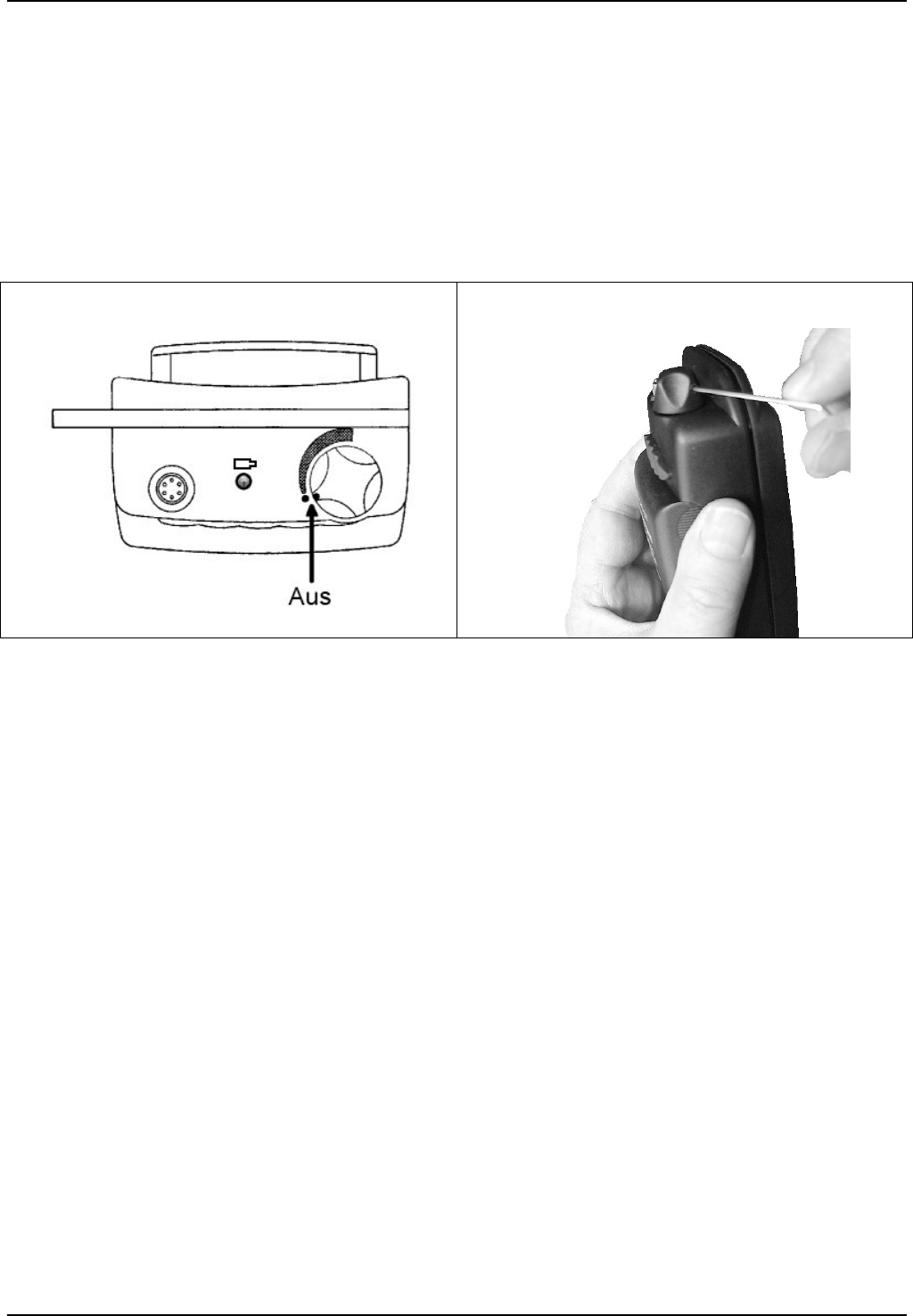
17
b. Mounting the cover: insert the two hooks of the battery compartment cover into the openings at the
compartment’s bottom (figure 8). Fold the cover upwards and press it against the battery compart-
ment until it is engaged.
5.1.4 Replacing the potentiometer knob
a. Rotate the potentiometer knob anticlockwise into OFF position (figure 10).
b. Unscrew the stud screw (M3) with the help of a hexagon socket head wrench SW 1.5 (figure 11).
c. Pull the potentiometer knob off the shaft and replace it. When slipping the new potentiometer knob
onto the shaft, please make sure both white dots, marked on the potentiometer knob and the CT-
DECT Multi, are aligned (figure 10).
Figure 10 Potentiometer head in OFF position
Figure 11

18
Notes

19
Notes
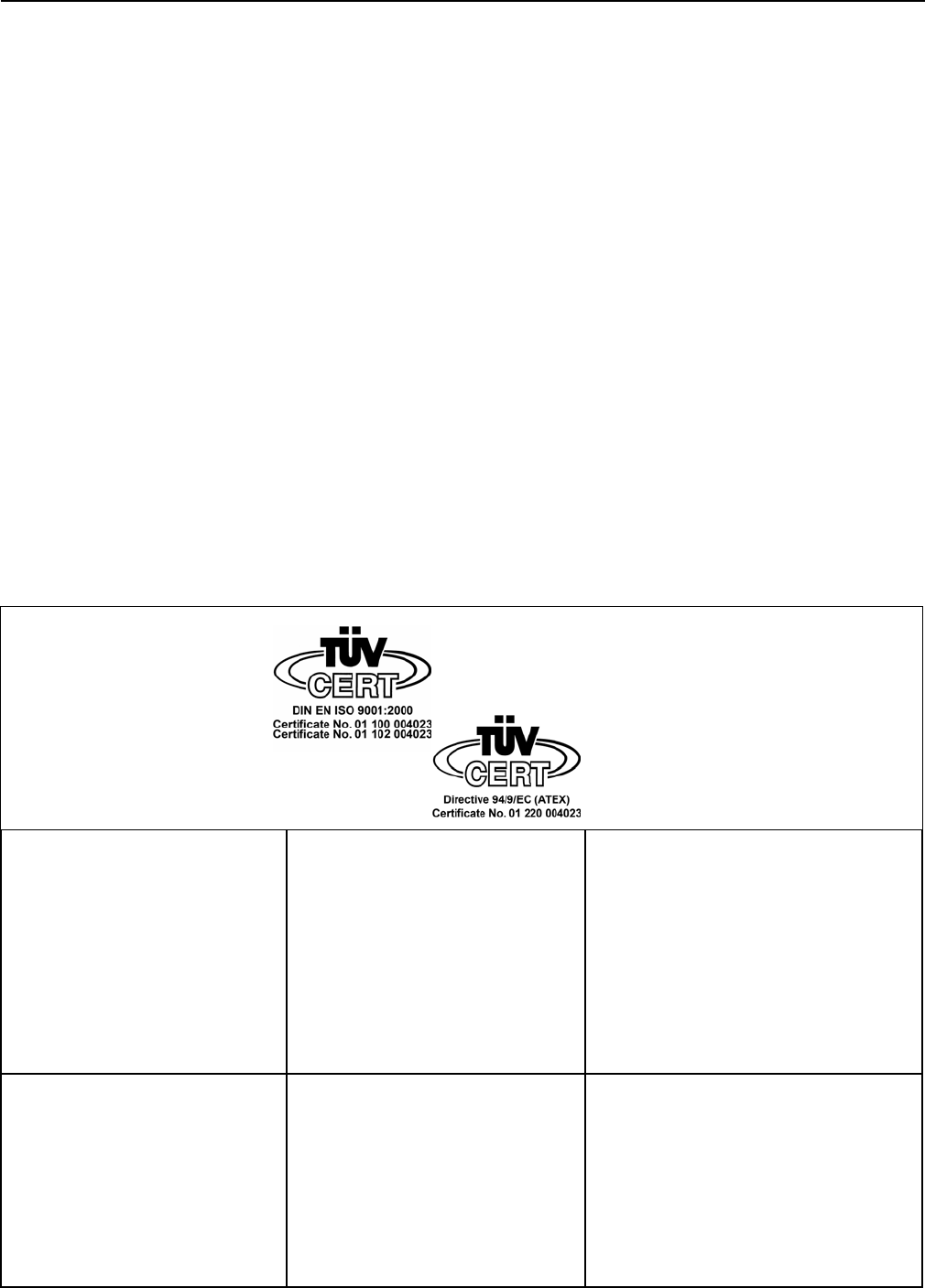
Germany and
International Sales
CeoTronics AG
Adam-Opel-Str. 6
63322 Rödermark
Tel. +49 6074 8751-0
Fax +49 6074 8751-676
E-Mail sales@ceotronics.com
USA/Canada/Mexico
CeoTronics, Inc.
300 Southport Circle, Suite 103
Virginia Beach, Virginia 23452
Tel. +1 757 549-6220
Fax +1 757 549-6240
E-Mail sales@ceotronicsusa.com
France
CeoTronics Sarl
Bât. Delta T
Z.A. du Tuboeuf
Allée des Pleus
77257 Brie Comte Robert Cédex
Tel. +33 1 60183300
Fax +33 1 60286060
E-Mail ventes@ceotronics.fr
Spain
CeoTronics S.L.
C/Ciudad de Frias 7 y 9
Nave 19
28021 Madrid
Tel. +34 91 4608250 51
Fax +34 91 4603193
E-Mail ventas@ceotronics.es
Switzerland
CeoTronics AG
Grundstr. 16
6343 Rotkreuz
Tel. +41 41 7905838
Fax +41 41 7905839
E-Mail info@ceotronics.ch
Poland
CeoTronics Sp. z o.o.
ul. Słonecza 15
91-491 Łódź (Polska)
Tel. +48 42 6553311
Fax +48 42 6552288
E-Mail biuro@ceotronics.pl
Germany and
International Sales
CT-Video GmbH
Gewerbegebiet Rothenschirmbach 9
06295 Lutherstadt Eisleben
Tel. +49 34776 6149-0
Fax +49 34776 6149-11
E-Mail ctv.info@ceotronics.com
EIGENE/bw/dok1208.doc/00/1107 y DOK 1208 Änderungen vorbehalten